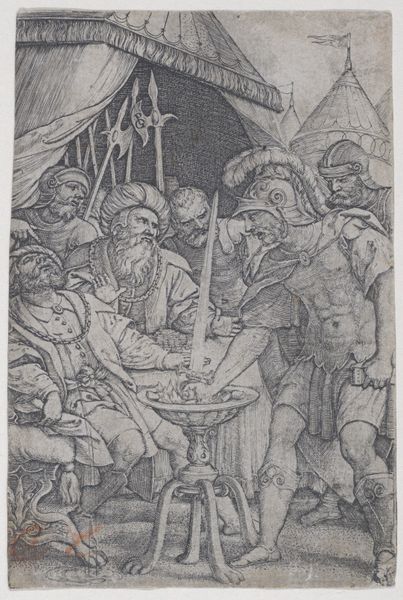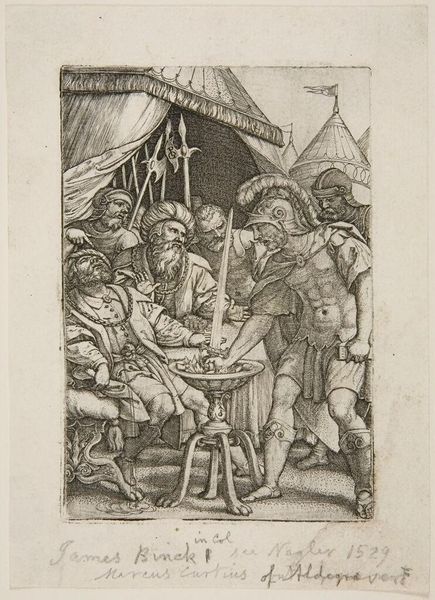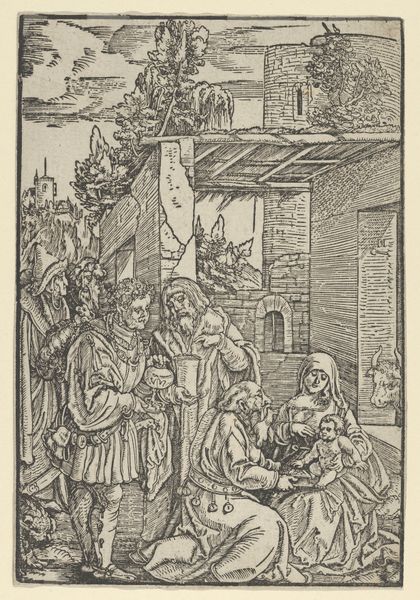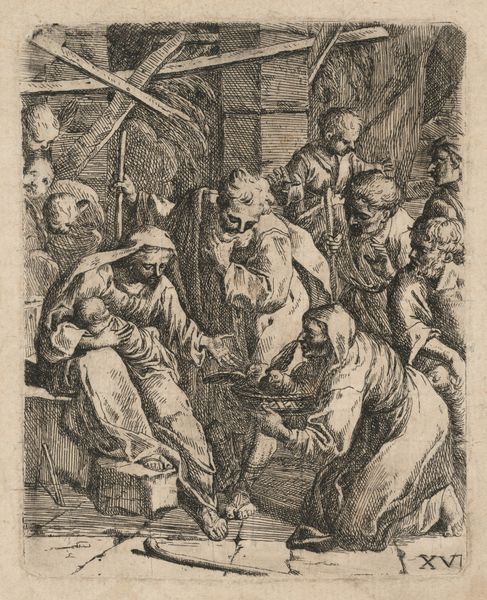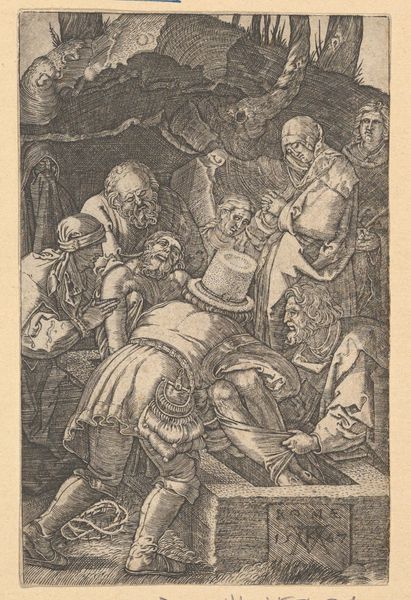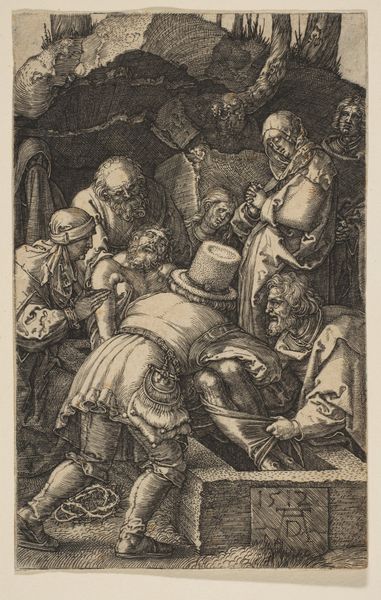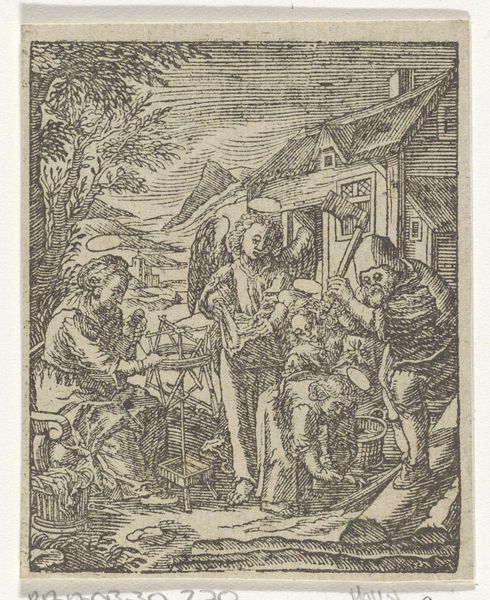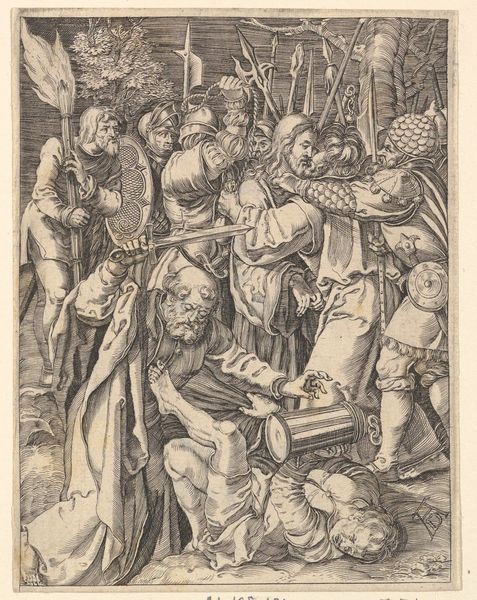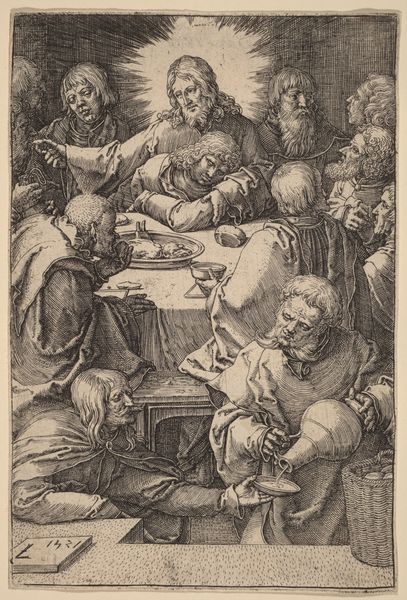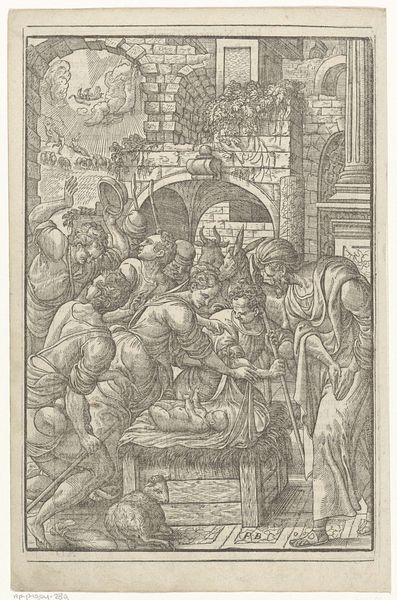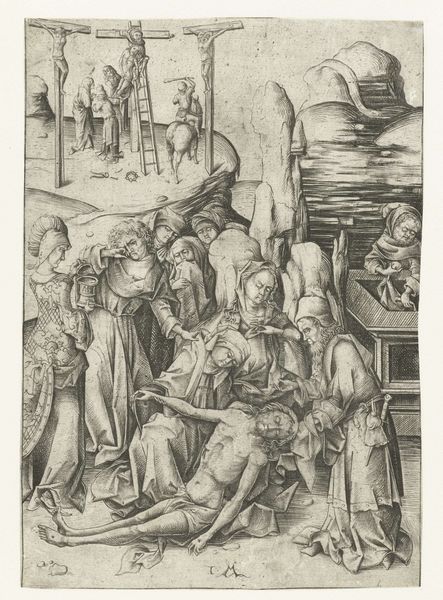
print, engraving
#
narrative-art
# print
#
figuration
#
11_renaissance
#
history-painting
#
northern-renaissance
#
academic-art
#
engraving
Dimensions: height 115 mm, width 79 mm
Copyright: Rijks Museum: Open Domain
Curator: Ah, look, a somewhat sinister little world etched into this print. Editor: Indeed. This is Georg Pencz’s “Mucius Scaevola thrusts his right hand into the fire,” dating back to 1535. Curator: You can practically smell the sulfur! I mean, just look at the determined set of his jaw as his hand blazes away. It’s either heroic devotion or absolute stubbornness. Perhaps a bit of both? Editor: It’s interesting to observe Pencz's technique here; you really notice how he utilizes engraving to simulate the dramatic tension. The concentration of lines creates dark contrast where Scaevola sacrifices his hand—highlighting the social context of honor, pain, and performance. It is made even more fascinating because he's not only referencing an event of bravery and devotion, he's demonstrating those characteristics as well through laborious work. Curator: The surrounding figures are captivating. One is entirely focused on Scaevola; while the leader in the middle looks utterly unimpressed. Such complex storytelling packed in such a small work; it does demand you to lean in close and absorb every micro detail. The way light flickers in this image is pure poetry to me, don't you think? Editor: Light and shadow guide the narrative, spotlighting social expectations of masculine performance; particularly through materials that emphasize texture—the armor, fabrics and fur evoke not just touch but weight, labor, wealth and power. Curator: It really comes alive when you imagine the Northern Renaissance world Pencz inhabited—the print workshops bustling with activity and ideas circulating. The smell of ink and paper as artisans transformed narratives into enduring works of art, where these concepts of "sacrifices" had strong sociopolitical impacts. Editor: Right. That the artist translated the grandiosity of narrative into a reproducible print alters both its message and value as a work, thereby making grand gestures such as this widely accessible. We must always remain aware of the societal structure supporting this creation; while being conscious about its distribution throughout. Curator: This whole experience is really about looking inward; that courage isn’t always loud, sometimes it is just the still, small act of keeping faith with yourself, even when the flames are licking. Editor: Absolutely. We're observing how artistic expression interacts with the socioeconomic considerations of a certain time—creating artifacts whose production value can shift as its significance becomes reimagined through future circumstances.
Comments
No comments
Be the first to comment and join the conversation on the ultimate creative platform.
